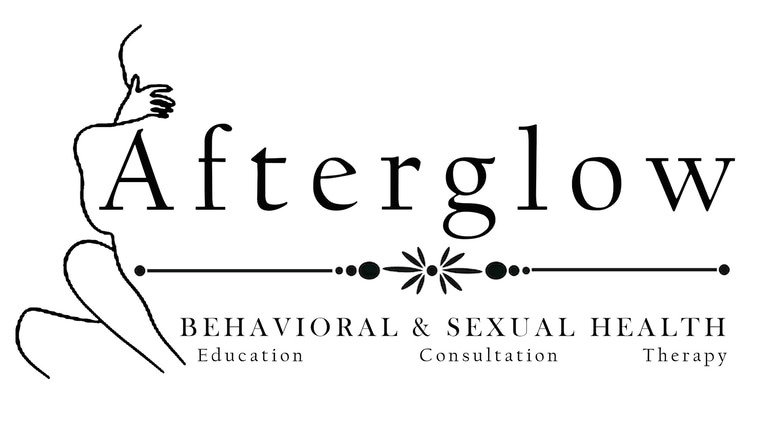Rough Sex: Passion, Connection, and Why It’s Not About Anger
Rough sex, often misunderstood as painful, abusive, or angry, is actually about passion, connection, and trust when practiced consensually. Far from being reckless, it thrives on communication, safety, and mutual enthusiasm, allowing partners to explore intensity while deepening intimacy. Research shows that couples who negotiate boundaries and embrace rough play report higher sexual satisfaction and stronger emotional bonds. At its core, rough sex isn’t about taking out frustration — it’s about amplifying passion through attunement, consent, and aftercare, making it a powerful and fulfilling way to connect.
GENERAL SEXUAL HEALTH
Dr. Kent
10/2/20254 min read


When people hear the phrase rough sex, they often picture a scene from a late-night cable show: hair flying, furniture crashing, and at least one neighbor calling the landlord. Others might imagine something dark, angry, or even abusive. But here’s the reality: rough sex doesn’t mean reckless sex. Done right, it’s not about hurting your partner — it’s about intensity, passion, and deep connection.
Think of rough sex like dancing to a rock anthem instead of a slow ballad. The beat is faster, the moves are bolder, but you’re still dancing together. And just like dancing, the most important part is knowing the steps, trusting your partner, and checking in so no one ends up with a twisted ankle — or in this case, a sprained emotional connection.
Rough Sex ≠ Painful or Abusive
Let’s get this out of the way first: rough sex is not abuse. Abuse is non-consensual, harmful, and rooted in control. Rough sex, on the other hand, is consensual, negotiated, and rooted in trust. The difference is night and day.
Research backs this up: a 2018 study in the Journal of Sex Research found that nearly half of adults reported enjoying some form of rougher play, from spanking to hair-pulling. Importantly, those who engaged in it within healthy relationships reported higher sexual satisfaction and often stronger emotional bonds. Why? Because rough sex isn’t about domination for domination’s sake — it’s about amplifying passion while maintaining connection.
The therapeutic takeaway: if you’re worried rough sex means pain, trauma, or danger, rest assured — consent and communication are the guardrails that keep it safe, healthy, and enjoyable.
It’s Not Angry Sex Either
Another misconception: rough sex equals angry sex. But rough sex isn’t a punching bag for your unresolved emotions. It’s not about punishing your partner because traffic was bad or your boss sent a snarky email.
Angry sex is where frustration and aggression get projected onto your partner. That can be damaging, both emotionally and physically, because the energy is rooted in rage, not intimacy. Rough sex, in contrast, is rooted in passion. It’s mutually chosen, mutually enjoyed, and has nothing to do with taking out bad feelings on each other.
Think of it this way: angry sex is like throwing plates in the kitchen; rough sex is like cooking with fire — hotter, faster, maybe messier, but still nourishing.
Why People Enjoy Rough Sex
So why do so many people — across all demographics — enjoy rough sex? Let’s look at the data and psychology:
Arousal Amplifier: The intensity of rough sex heightens arousal. Faster pace, stronger touch, and high-energy dynamics create a rush of adrenaline and dopamine, the body’s natural “reward” chemicals.
Trust Builder: Allowing a partner to grab, pin, or restrain you (consensually!) requires high trust. That vulnerability, when respected, deepens emotional connection.
Variety Factor: A 2019 survey published in Archives of Sexual Behavior found that sexual variety is strongly linked to long-term satisfaction. Rough sex adds spice to routines that might otherwise feel predictable.
Playful Power Dynamics: Rough sex lets couples safely explore elements of dominance, submission, or role shifts — not as rigid “kink,” but as a playful way to explore intensity.
What Rough Sex Looks Like (When It’s Healthy)
Every couple defines “rough” differently, but common elements include:
Physical intensity: Hair pulling, spanking, stronger grips, or firmer thrusts.
Pace changes: Faster rhythms, sudden movements, or more forceful positioning.
Verbal dynamics: Dirty talk, commanding language, or playful push-pull banter.
Controlled risks: Biting, scratching, or light choking (with clear agreements and safety signals).
The key word? Controlled. Nothing in rough sex should happen without prior communication and mutual enthusiasm. Rough doesn’t mean reckless.
Consent: The Bedrock of Passion
The sexiest word in rough sex isn’t “harder.” It’s consent.
Consent is what separates passionate intensity from harm. In practice, that means:
Discussing beforehand: Talk about what you’re comfortable with (and not).
Safe words or signals: Simple systems like “red, yellow, green” keep things clear.
Check-ins: Pausing mid-scene to ask, “Is this still good?” keeps trust strong.
Research from the Kinsey Institute shows that couples who communicate clearly about sexual boundaries report not only greater satisfaction in rougher encounters but also stronger overall relationship trust.
Why Connectivity Is the Heart of It
Here’s where the therapeutic lens comes in: rough sex, at its best, is about intensity of connection, not intensity of force.
Connectivity shows up in:
Eye contact during heated moments, which neuropsychologists say increases oxytocin.
Reading cues — knowing your partner’s breath, moans, or movements well enough to adjust pace or pressure.
Aftercare — cuddling, affirmations, or laughter after a rough encounter, which reinforces intimacy and reassures safety.
Far from being disconnected chaos, rough sex often requires more attunement than slow sex, because the stakes feel higher. And when both partners lean into that awareness, the bond only strengthens.
Humor in the Heat
Rough sex can also be funny. Yes, funny. Sometimes a handcuff sticks, a headboard breaks, or your attempt at “sexy growl” sounds like a congested bear. Laughter doesn’t ruin the mood — it adds to it. Couples who laugh together mid-sex report feeling closer and more satisfied, according to research in Couple and Family Psychology.
So if your “rough” session includes a few bloopers, congratulations: you’re human. And likely building even more trust with your partner.
What Rough Sex Is Not
Let’s recap the boundaries, because clarity is therapeutic:
It’s not abuse (that’s non-consensual, unsafe, and harmful).
It’s not angry sex (that’s projecting frustration, not building intimacy).
It’s not universal (not everyone likes it — and that’s okay).
It’s not about pain (unless negotiated; for many, it’s about intensity without discomfort).
What it is: a consensual, passionate style of intimacy that, when done well, fosters connection and variety.
Data to Take Home
If you like stats with your passion, here are a few to chew on:
Nearly 50% of adults in the U.S. report enjoying some form of rough sex at least occasionally (Journal of Sex Research, 2018).
Couples who openly discuss rough play report 20–30% higher satisfaction than those who engage without discussion (Kinsey Institute surveys, 2019).
Emotional aftercare following intense sex increases oxytocin and reduces cortisol, reinforcing both physical and emotional intimacy (Journal of Sexual Medicine, 2017).
The data is clear: passionate roughness + communication = stronger intimacy.
The Therapeutic Bottom Line
Rough sex isn’t about pain, punishment, or pent-up rage. It’s about passion, connection, and trust. Done with respect and consent, it can add intensity, variety, and fun to your sex life without sacrificing safety or tenderness.
So if you’ve ever dismissed rough sex as “angry” or “dangerous,” consider reframing it: it’s less about smashing walls and more about fanning flames. It’s a style of intimacy that says, “I trust you enough to let go with you,” which might just be the sexiest message of all. And you can let the Afterglow begin.
Connect with us
© 2025. All rights reserved.
dr.kent.sexhealth@gmail.com


